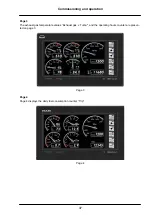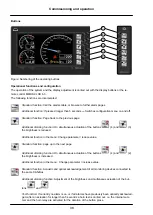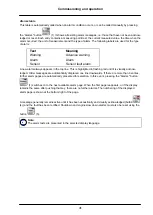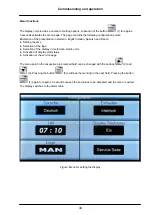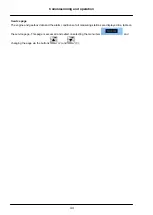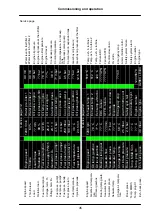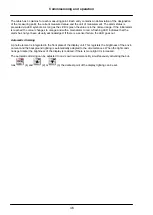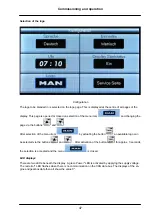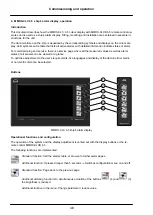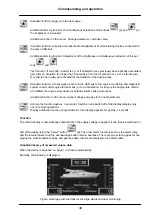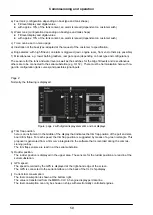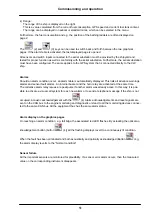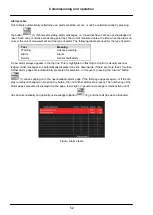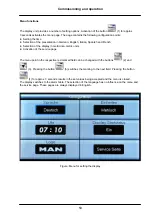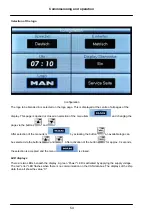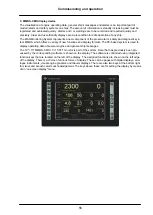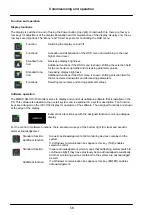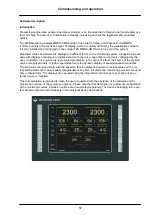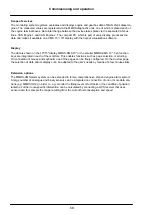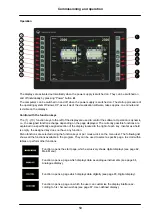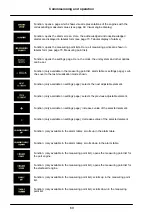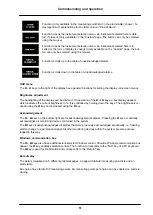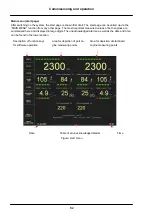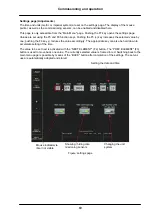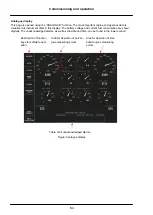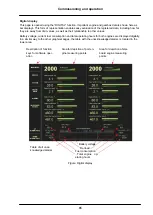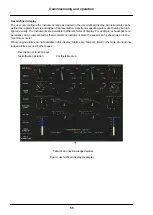
Commissioning and operation
51
k) Range:
The range of the ship is displayed on the right.
This is a value calculated from the current fuel consumption, GPS speed and current fuel tank content.
The range can be displayed in nautical or standard miles, which can be selected in the menu.
Furthermore, the fuel consumption and e.g. the position of the bathing ladders are often displayed on
page 2.
The
(2) and
(3) keys can be used to switch back and forth between the two graphical
pages. If the alarm table is activated, the last displayed page is opened.
All sensors and switch inputs connected to the serial substation must be provided by the shipyard and
tested for proper function as well as conformity with the serial substation. Furthermore, the serial substation
must have been configured. The same applies to the GPS system that is connected directly to the CLC
ship.
Alarms
Should an alarm condition occur, an alarm table is automatically displayed. This lists all advance warnings,
alarms and sensor fault alarms. An internal buzzer and the horn relay are activated at the same time.
The collective alarm relay issues a repeat pulse if another alarm was already active. In this way, it is pos
sible to activate a visual call system for each new alarm or to send a telephone message if the ship is not
occupied. Acoustic acknowledgement with the
(4) Alarm acknowledgements and reset signals are
sent on the CAN bus to the engine monitoring and diagnostic unit and to all the monitoring devices connec
ted to the same CAN bus. All the equipment thus has the same alarm status.
Alarm display on the graphics pages
On reaching an alarm condition, e.g. full bilge, the associated red LED flashes. By actuating the optical ac
knowledgement button (button
(4)) all the flashing displays revert to a continuously lit condition.
When the fault has been eliminated and both acoustically and optically acknowledged (Button
(4)),
the alarm display reverts to the “Normal condition".
Sensor failure
All the important sensors are monitored for plausibility. If a sensor error alarm occurs, then the measured
value on the corresponding instrument disappears.

